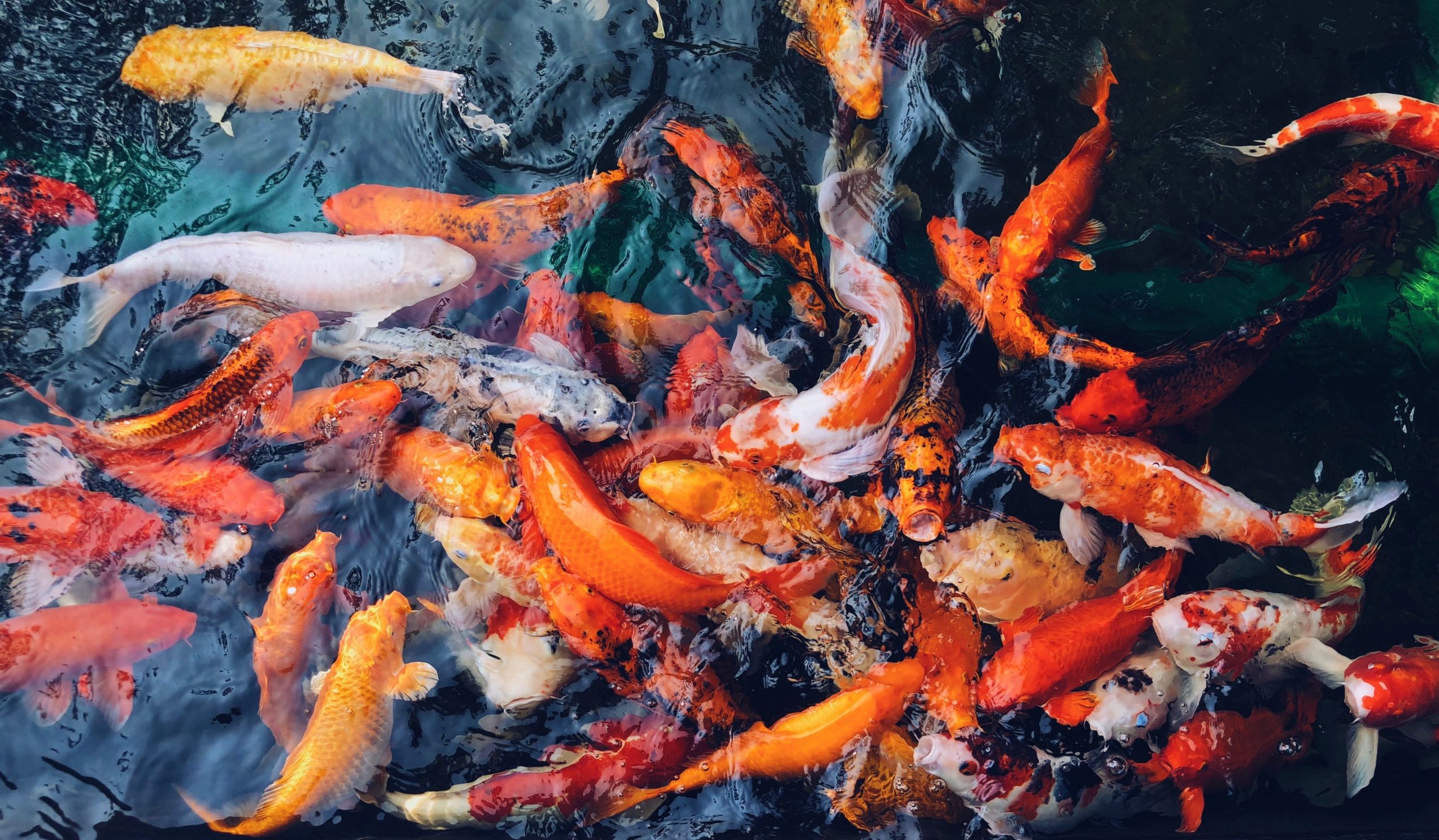Understanding Koi Communucation:
Body Language, Sound & Touch

Koi aren’t just quiet swimmers—they have their ways of “talking” through body movements, sounds, and even gentle touches. By noticing these signals, you can get a better feel for your koi’s mood, health, and overall behavior.
In this guide, we’ll explore the world of koi behavior and communication. We will be sharing easy tips and insights to help you truly understand and appreciate these beautiful “jewels of the pond.“

Koi Communication Through Body Language
One of the easiest ways koi communicate is through their swimming and body posture. When they’re relaxed and happy, they move gracefully through the water, their fins spread wide in a calm, steady rhythm. But when they’re stressed or scared, their swimming becomes frantic and fast, with their fins pulled close to their bodies.
Flicking or flashing, when koi rub against surfaces, is another behavior to look out for. It can be a sign of skin irritation, parasites, or poor water quality. If you see your koi flicking often, it’s a good idea to check the water or look for signs of illness in the fish.
How Koi Express Themselves through Sound
While not all pond owners are aware, koi can make sounds to communicate. These sounds are usually low grunts or croaks, which are often hard to hear above water. Koi typically make these noises when they’re excited, during feeding, or when they feel stressed. For example, if one koi chases another, you might hear a grunt or splash, signaling a territorial dispute or a warning.
Koi’s Language of Touch
In koi, touch is a unique way of communicating, especially in social settings. When two koi gently nudge each other with their heads, it’s usually a friendly gesture that shows recognition and respect. This gentle nudging is a bonding behavior and plays a big role in establishing their social order within the pond.
Tip: Watch for any changes in how your koi swim, hold their fins, or even the sounds they make. Noticing these small signs early can help you catch stress, illness, or water issues before they become serious.
By learning to interpret koi communication—through body language, sounds, and gentle touches—you gain a deeper connection to their world. Observing these signals helps you understand their needs, moods, and health, creating a peaceful, thriving pond where your koi feel safe and understood. With a bit of patience, you’ll enrich your koi-keeping experience and foster a happy environment for these beautiful fish.
Koi communicate in fascinating ways—through body language, sounds, and touch. However, they also express themselves differently when stressed, and understanding these signs is key to interpreting their behavior.
Source/Reference: https://www.thatpondguy.co.uk